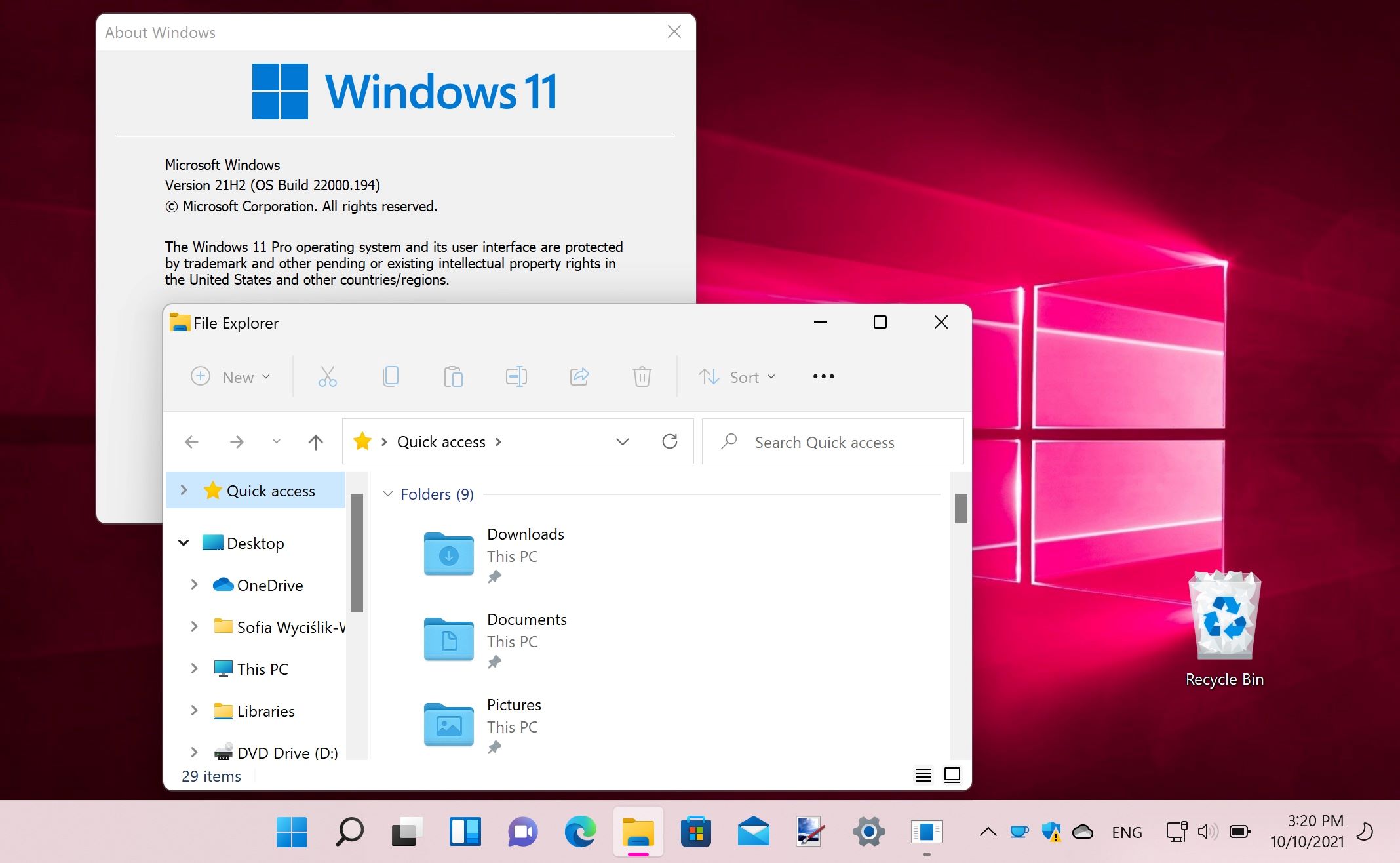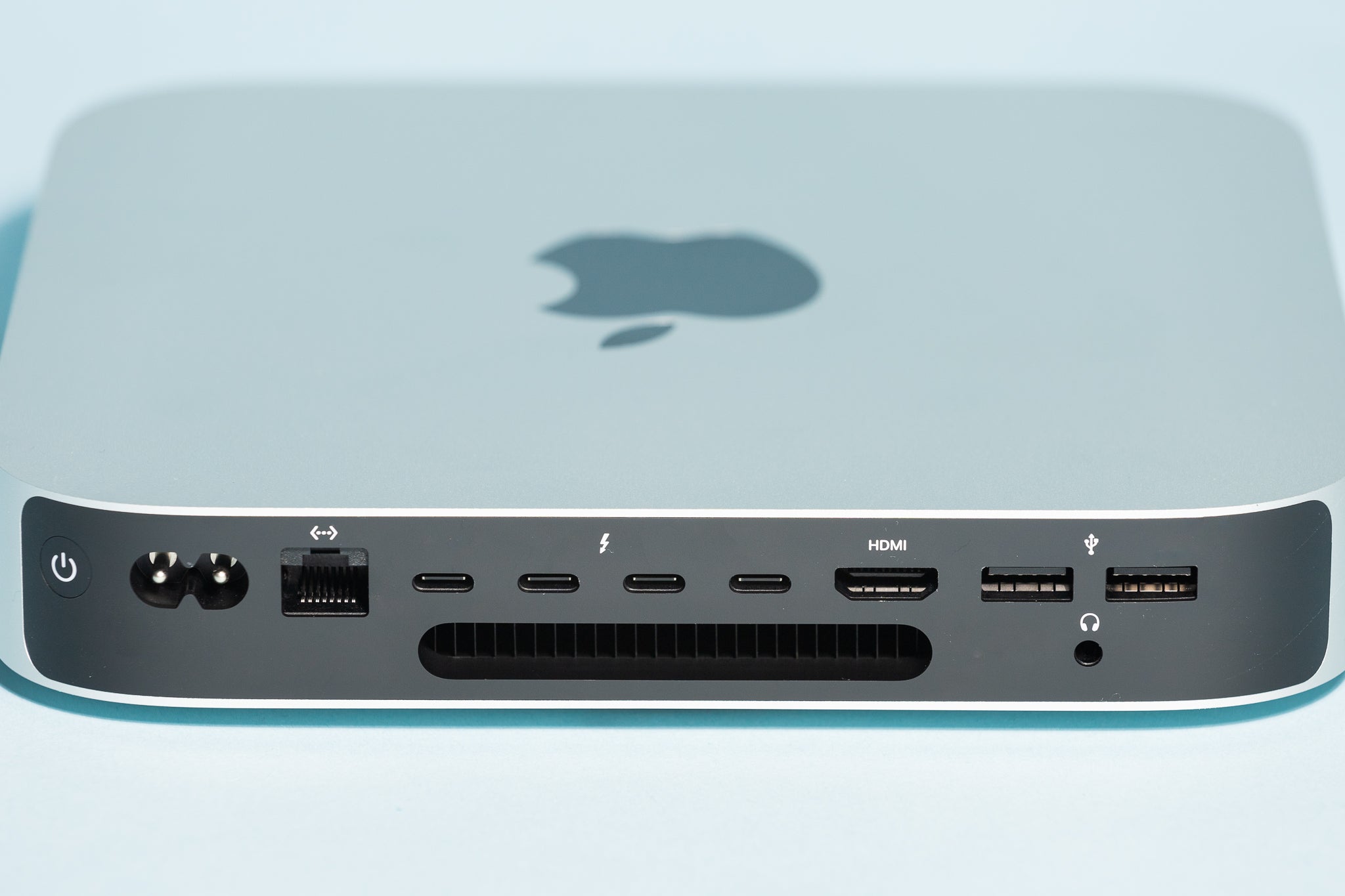Introduction
Windows 11, the latest operating system from Microsoft, brings a host of new features and a fresh user interface. However, not all users may find the upgrade to Windows 11 suitable for their needs. If you have recently upgraded to Windows 11 and are experiencing compatibility issues or simply prefer the familiarity of Windows 10, you may be wondering if it’s possible to downgrade.
In this article, we will guide you through the process of downgrading from Windows 11 to Windows 10. We will provide step-by-step instructions to help you safely revert to the previous operating system, ensuring that your data and settings are preserved during the process.
Please note that downgrading operating systems involves making significant changes to your computer’s software. It’s essential to follow the instructions carefully and ensure that you have backed up your data before proceeding. Additionally, bear in mind that downgrading may result in the loss of some Windows 11 features and functionality.
Before we delve into the downgrade process, it’s crucial to emphasize the importance of backing up your data. Downgrading to Windows 10 will involve reinstalling the operating system, which means all your files and settings will be erased. By creating a backup, you can safeguard your important documents, photos, videos, and other data from being lost during the downgrade process.
In the next section, we will explain how to back up your data effectively to avoid any potential loss. Let’s get started!
Back up your data
Before proceeding with the downgrade process, it is crucial to back up all your important data. This will ensure that you don’t lose any files or documents during the transition from Windows 11 to Windows 10. Here’s how you can effectively back up your data:
- External storage device: Connect an external hard drive, USB flash drive, or an external SSD to your computer. Make sure it has sufficient storage space to accommodate all your files.
- Manually copy files: Open File Explorer and navigate to your important files, such as documents, photos, videos, and any other data you want to back up. Select the files and folders you wish to copy, then right-click and choose “Copy.” Paste the files onto the external storage device.
- Use backup software: Alternatively, you can use backup software to automate the process. There are several reliable backup applications available, such as Acronis True Image, Macrium Reflect, or EaseUS Todo Backup. Install the software, follow the instructions to select the files you want to back up, and choose the external storage device as the destination for the backup.
- Cloud storage: If you have limited external storage space or prefer an additional layer of security, consider backing up your data to a cloud storage service. Providers such as Google Drive, Microsoft OneDrive, or Dropbox offer convenient and secure cloud storage options.
Remember, it’s essential to double-check that all your important files are successfully backed up before proceeding with the downgrade process. Take the time to verify that your backup is complete and accessible by accessing the files from the external storage device or cloud storage service.
Once you have made a thorough backup of your data, you are ready to proceed with the next step: creating a Windows 10 installation media. This will allow you to install Windows 10 on your computer after downgrading from Windows 11. The following section will guide you through this process.
Creating a Windows 10 installation media
Before you can downgrade from Windows 11 to Windows 10, you will need to create a Windows 10 installation media. This will be used to reinstall the operating system after the downgrade process. Here’s how you can create a Windows 10 installation media:
- Download the Windows 10 ISO: Visit the official Microsoft website and download the Windows 10 ISO file. Ensure that you choose the correct version and language that matches your current Windows 11 installation.
- Prepare a USB flash drive: You will need a USB flash drive with at least 8 GB of storage capacity. Connect the USB flash drive to your computer.
- Create a bootable USB: To create a bootable USB using the Windows 10 ISO, you can use a tool like Rufus or the Windows USB/DVD Download Tool. These tools will guide you through the process of creating a bootable USB device using the downloaded Windows 10 ISO file.
- Follow the instructions: Launch the tool of your choice and follow the on-screen instructions. You will need to select the Windows 10 ISO file, choose the USB flash drive as the destination, and proceed with the creation of the bootable USB drive.
Once you have created the Windows 10 installation media, you are ready to proceed with the downgrade process. It’s essential to note that using the installation media will erase all data on your computer’s hard drive, so make sure you have backed up all necessary files before proceeding.
In the next section, we will guide you through the process of booting your computer from the Windows 10 installation media in order to initiate the downgrade to Windows 10. This step is crucial in reinstalling the older operating system on your device.
Boot from the installation media
Now that you have created the Windows 10 installation media, it’s time to boot your computer from it. This will allow you to initiate the downgrade process and reinstall Windows 10 on your device. Follow these steps to boot your computer from the installation media:
- Insert the Windows 10 installation media: Insert the USB flash drive containing the Windows 10 installation files into a USB port on your computer.
- Restart your computer: Restart your computer to begin the booting process. Make sure to save any unsaved work before doing so.
- Access the boot menu: During the startup process, press the key or key combination that allows you to access the boot menu. The specific key can vary depending on your computer’s manufacturer, but commonly used keys include F12, Esc, or Del.
- Select the installation media: From the boot menu, use the arrow keys on your keyboard to select the USB flash drive or the device name corresponding to the Windows 10 installation media.
- Boot from the installation media: After selecting the installation media, press the Enter key to boot your computer from it. Your computer will now begin the Windows 10 installation process.
The booting process may take a few moments, and you might see a Windows 10 loading screen or a prompt to press any key to start the installation. Follow the on-screen instructions to proceed with the installation of Windows 10.
It’s important to note that during the installation process, you may encounter confirmation prompts, license agreements, and options to customize the installation. Read through the instructions carefully and make the appropriate choices according to your preferences.
Once the installation of Windows 10 is complete, you can proceed to the next section to learn how to choose the language and settings for your newly installed operating system.
Choose the language and settings
After successfully booting from the Windows 10 installation media, you will be prompted to choose the language and other settings for your newly installed operating system. Follow these steps to select the language and settings:
- Select the language: From the list of available languages, choose your preferred language for the Windows 10 operating system. This selection will determine the language used for the system menus, dialog boxes, and other system components.
- Choose the time and currency format: Select your desired time and currency format from the provided options. This will ensure that your system displays the correct time and currency symbols according to your location.
- Decide on the keyboard layout: Choose the keyboard layout that matches your keyboard configuration. This selection ensures that you can type correctly using your keyboard layout.
- Set up network and internet options: If your computer is connected to a network or has internet access, you may need to configure network settings during the Windows 10 installation process. Follow the on-screen instructions to connect to a network or set up the necessary internet options.
After completing these steps, click or tap the “Next” or “Continue” button to proceed to the next stage of the installation process.
During the installation, Windows 10 may require additional setup, such as creating a user account, setting up a password, or configuring privacy settings. Follow the prompts provided by the installation wizard and make the necessary choices according to your preferences.
Once you have completed the language and settings configuration, Windows 10 will continue with the installation process. This process may take some time, depending on your computer’s hardware specifications.
In the next section, we will cover the steps to install Windows 10 and ensure that your computer is running the previous operating system successfully.
Install Windows 10
Now that you have chosen the language and settings for your Windows 10 installation, it’s time to proceed with the actual installation process. Follow these steps to install Windows 10 on your computer:
- Select the installation type: You will be presented with different installation options. Choose the “Custom” or “Advanced” option to perform a clean installation of Windows 10. This option will remove the existing Windows 11 installation and any associated files.
- Choose the installation location: Select the drive or partition on which you want to install Windows 10. If you have multiple drives, ensure that you select the correct one. Be aware that all data on the selected drive will be erased during the installation process.
- Begin the installation: Click or tap the “Install” or “Next” button to initiate the installation. Windows 10 will now be installed on your computer. The installation process may take some time, so be patient and let it complete.
- Follow the on-screen instructions: During the installation process, you may be prompted to enter your product key, accept the license terms, or make additional settings. Follow the on-screen instructions and provide the necessary information as required.
- Wait for the setup to complete: Windows 10 will finalize the installation and perform any necessary configurations. Your computer may restart several times during this process. Allow the setup to complete all the necessary steps.
Once the installation is complete, your computer will boot into the fresh installation of Windows 10. You can now proceed to the next section to reinstall drivers and software to ensure optimal performance.
It’s important to note that after the installation, you may need to reactivate Windows 10 with your product key. If you don’t have a product key, you can choose to activate Windows 10 later. However, some features and customization options may be limited until you activate your copy of Windows 10.
In the next section, we will guide you on how to reinstall drivers and software to optimize the performance of your Windows 10 installation.
Reinstall drivers and software
After successfully installing Windows 10 on your computer, it’s crucial to reinstall your drivers and software to ensure that your system functions properly and to take advantage of all the available features. Follow these steps to reinstall your drivers and software:
- Use Windows Update: Windows 10 will automatically search for and install the necessary drivers through Windows Update. Go to “Settings” -> “Update & Security” -> “Windows Update” and click on “Check for Updates.” If any driver updates are available, Windows will download and install them for you.
- Visit the manufacturer’s website: If some drivers are not available through Windows Update, visit the official website of your computer’s manufacturer. Look for the “Support” or “Drivers” section and enter your model number or serial number to find the appropriate drivers for your system. Download and install the drivers specific to your hardware components.
- Reinstall software applications: Reinstall all the software applications that were previously installed on your computer. Locate the installation files or download them from the official websites of the respective software providers. Follow the installation instructions to reinstall your preferred software.
- Update drivers and software: After reinstalling your drivers and software, it’s essential to keep them up to date. Use Windows Update, manufacturer-provided update tools, or third-party software such as Driver Booster or Patch My PC to scan for updates and install the latest versions of your drivers and software.
By ensuring that you have the latest drivers and software installed, you can optimize the performance and compatibility of your system with Windows 10.
Once you have completed the reinstallation of drivers and software, it’s time to restore your data from the backup made earlier. The next section will guide you through the process of restoring your data and files.
Restore your data
After downgrading to Windows 10 and reinstalling the necessary drivers and software, it’s time to restore your data from the backup you created earlier. Follow these steps to restore your data:
- Connect the external storage device: If you used an external hard drive, USB flash drive, or cloud storage service to back up your data, connect or access the storage device to your computer.
- Locate and copy your files: Navigate to the location where you stored your backup files. Copy and paste them back to your computer’s internal storage or the appropriate folders. You can restore individual files or entire folders, depending on your backup selection.
- Verify the integrity of your restored files: Once the copying process is complete, double-check that all your files have been successfully restored. Open a few files to ensure their integrity and accessibility. If any files seem corrupted or inaccessible, try copying them again from the backup source.
- Reinstall any necessary applications or programs: If your backup only included data files and not the installed software, you will need to reinstall any necessary applications. Use the installation files or download them from the official websites, then follow the installation instructions provided.
- Configure settings and preferences: After restoring your data and reinstalling the necessary software, take the time to configure your settings and preferences according to your preferences. This includes personalizing your desktop, adjusting system settings, and setting up any required accounts or accounts within applications.
Remember to take your time and carefully restore your data to ensure that everything is in its proper place and accessible. If you encounter any issues during the restoration process, refer to the support documentation provided by your backup software or consult with their support team for assistance.
With your data successfully restored, you have completed the process of downgrading from Windows 11 to Windows 10. Enjoy using Windows 10 and take advantage of its features and stability.
Conclusion
Downgrading from Windows 11 to Windows 10 can be a decision based on personal preference, compatibility issues, or the need for a familiar operating system. Throughout this guide, we have provided step-by-step instructions to help you successfully downgrade while preserving your data and settings.
We started by emphasizing the importance of backing up your data before proceeding with the downgrade process. Creating a Windows 10 installation media was the next crucial step, ensuring that you have the necessary files to reinstall Windows 10 on your computer.
Booting from the installation media allowed you to initiate the downgrade process, followed by selecting the language and settings for your newly installed Windows 10 operating system. Installing Windows 10 and reinstalling drivers and software guaranteed the optimum performance of your system with the older operating system.
Finally, restoring your data from the backup completed the process, bringing back your important files and documents to their rightful place. By following these steps, you successfully downgraded from Windows 11 to Windows 10.
Remember, downgrading operating systems involves making significant changes to your computer’s software. Always thoroughly back up your data and ensure you have the necessary installation media and drivers before proceeding.
We hope this guide has been helpful in helping you navigate the process of downgrading from Windows 11 to Windows 10. Enjoy using Windows 10 and explore its features while experiencing the familiarity and stability it offers.

























